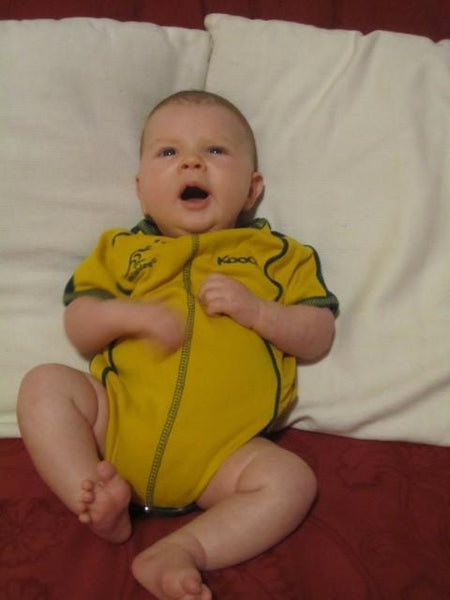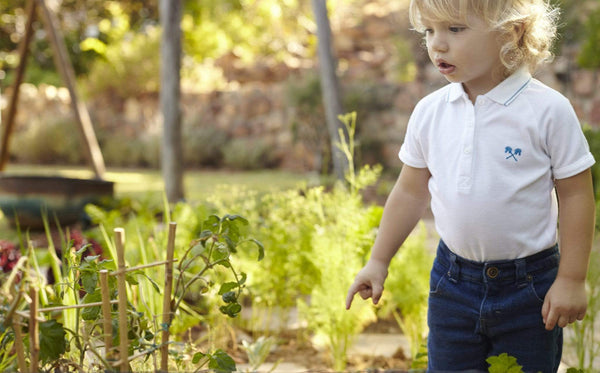Your ultimate guide to sun protection lingo

Reading time: 3 mins
We don't know about you, but seriously, standing in the sunscreen aisle makes our heads spin! UVA? UVB? UVX,Y, Z? Total block out? SPF? All those numbers and +s, anti-allergy, anti-everything, waterproof, water-resistant, don't even put it near water, spray, smear, spritz …?
Here is what all those terms, acronyms and numbers really mean.
Ultraviolet Radiation (UVR) is the invisible, electromagnetic light that reaches the earth from the sun. There are three types: UVA, UVB and UVC. UVC is absorbed by the earth's ozone layer, so until we have totally destroyed the ozone layer, we don't need to worry about these ones.
UVA penetrates the skin more deeply and is the primary cause of skin cancers, especially dangerous for young children’s sensitive skin. UVB are the burning rays. Originally scientists were just concerned with UVB as it is pretty obvious when your little one’s have had too much UVB: their pink skins turn bright pink, or dark skins go much darker and then peel. But as research developed it became clear that UVA was just as damaging, in fact UVA has a much more serious long-term consequence. So now, most sun protection products will have a UVF or Ultraviolet Protection Factor rating or are called ‘broad spectrum’, which is a combined UVA / UVB rating.
| UPF Rating | Protection | % UVR Blocked |
| 15, 20 | Good | 93.3 - 95.9 |
| 25, 30, 35 | Very Good | 96.0 - 97.4 |
| 40, 45, 50, 50+ | Excellent | more than 97.5 |
Lots of products still use an SFP or Sun Protection Factor label, which originally referred to the sunscreen’s ability to shield from UVB. Even though it is still a common label, be warned, it can still mean that the product only protects against UVB - best to check the labels properly.
And all those + numbers tell you how much longer it would take for your child to start burning if he or she is not wearing sunscreen. Without sunscreen, most children’s skin starts to burn when they have been in the sun for 10 to 20 minutes. So with an SPF +15 it would take 15 times longer for them to start burning, about 150 to 300 minutes, or about 2.5 to five hours.
That doesn’t mean your child is fully protected for those five hours, as suncream rubs and washes off easily, especially when they are jumping in and out of the splash pool or burying themselves in beach sand! Dermatologists highly recommend slathering the sunscreen onto your child every two to four hours, or as soon as they get our of the pool or waves. So a rating of UPF+50 for Parental Instinct’s sun protection swimwear range means that more than 97.5% of the sun’s rays are blocked, for 50 times longer. Doesn't get much safer than that!
What about Vitamin D?
Yes, it is true, we have become so sun-safety aware and are covering up every inch of our children’s skin in a way that their little bodies are producing less Vitamin D. And growing children really need Vitamin D for bone-growth and immunity. The recommendation now is to make sure that everyone gets 10 minutes of un-protected sun exposure everyday, but not between 11am and 2pm, when the sun is at it’s most harsh.
Rule of thumb for being in the sun
As much as we hate to admit it when the Australians are right, on this one they have got it nailed. The Australian Radiation Protection and Nuclear Safety Agency (ARPANSA) are the world’s authority on sun protection and how to get it right, and they recommend five ways to protect your child from the sun, and they even came up with a catchy way to remember them: Slip, Slop, Slap, Seek and Slide:
- Slip on some sun-protective clothing and cover up as much skin as possible
- Slop on broad spectrum, water-resistant SPF30+ (or higher) sunscreen. Put it on 20 minutes before you go outdoors and every two hours afterwards
- Slap on a hat – broad brim or legionnaire style to protect your face, head, neck and ears.
- Seek shade.
- Slide on some sunglasses.
So, roll on summer knowing that your children are safe!



















